To this day, we feel the effects of one of the greatest plunder in Polish history. To see priceless relics of our history, you have to go overseas.
In the years 1655-1660, a large part of Poland was under Swedish occupation. Its lands were to be used, inter alia, for the economic support of Karol Gustaw's war machine. But not only. They also helped ... in the modernization of Sweden itself. Many looted items were taken overseas. In the book "Rescued from the Deluge " Marcin Jamkowski and Hubert Kowalski talk about it:
Entire flotillas passed the stony reefs near the Citadel and raced on. Convoys traveled through Toruń and Malbork to reach Elbląg. And if the weather allowed, then also to Piława. There, the Swedish achievements were transferred to seagoing sailing ships.
Works of art, weapons, costumes and everyday items were placed under the decks. The books were previously packed in barrels, which the craftsmen sealed with tar. The Swedes were especially interested in them.
All these stolen goods contributed to the development of culture and intellectual life abroad. As a result of the Flood, the Commonwealth itself began to decline more and more.

During the Deluge, the Swedes took literally everything out of Poland. Now some of the looted items decorate museum exhibitions. The illustration shows a painting by Józef Brandt, "The Swedes' march to Kiejdany".
"Polonicasamlingen" from Skokloster Castle
Polish "traces" can still be found in many places in Sweden. Marcin Jamkowski and Hubert Kowalski came across extremely unusual ones while visiting the Skokloster Castle. They described the whole story in the book "Saved from the Deluge". The director of the museum located there showed them around this beautiful monument. Suddenly their eyes were caught by the floor in one of the rooms:
Marcin looks at his feet and stands still. He gasps for breath. He kneels down. She strokes a shiny piece of black stone with her hand and measures it with her fingers. He looks into the next room - there are only ordinary wooden boards left on the floor. Everyone is staring at him, most of all the director Bengt Kylsberg.
- Why is there a different floor in the adjacent room? - Marcin asks him.
- Another?
- Here are marbles, and there are boards. No stone left?
- And you know what, no one has ever asked such a question. I don't think we know the answer. Lord know? - Bengt Kylsberg's face is curious.
- I know!
- Then why?
- Because I have him!
No wonder the director received this statement by the Polish researcher with disbelief. However, his guests did indeed own the stone that made the floor of a Swedish castle! How it's possible? They retrieved it ... from the bottom of the Vistula River in the very center of Warsaw. Chunks of floor have been stuck in the river since the Flood. They ended up there when the Swedes who robbed marble of some castle, palace or church lost some of the loot. The rest safely crossed the Baltic and was used to decorate the residence of one of the Scandinavian magnates.
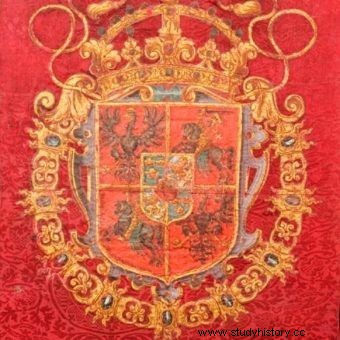
In Swedish museums you can find many valuable Polish monuments. The illustration shows a fragment of the banners of the trumpeters and palace drummers of Sigismund III Vasa.
But this is not the only treasure hidden in Skokloster Castle. It is known not so much from the floor as from the famous collection of Polonica ( Polonicasamlingen ). They include over two hundred items. What is not there! In the castle library you can find political writings, a large number of theological texts, reports from wars waged by the Commonwealth and poems praising Polish kings. Their authors are, among others, Jan Kochanowski, Piotr Skarga, Andrzej Frycz Modrzewski and Samuel Twardowski.
Armor of Sigismund Augustus and other military (Livrustkammaren)
The oldest museum in Sweden is called Livrustkammaren , that is, "Royal Armory". Its collections were made available to visitors in 1693. They are located in the Royal Palace in Stockholm. It houses military, art and everyday objects that have belonged to the royal family for five centuries.
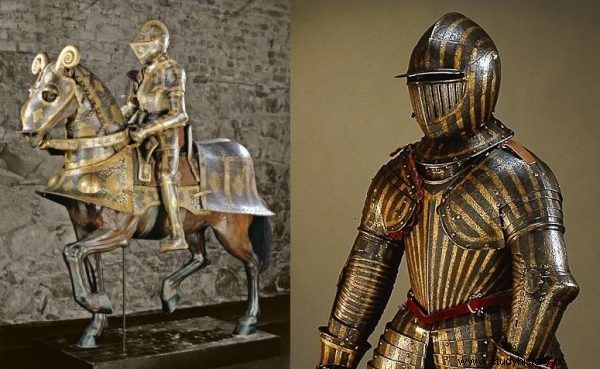
In Livrustkammaren you can see, among others, the parade armor of Zygmunt August (left) and Władysław IV Vasa (children's).
The main points of the visiting program were provided by the exhibits from Poland. Visitors are most impressed by the breathtakingly beautiful parade armor of Sigismund Augustus. It was made by Kunz Lechner, one of the Nuremberg masters, at the special request of the Polish king. However, this treasure was not stolen during the Flood. It was a gift from Anna Jagiellon to the Swedish King Jan III Vasa, when the mutual relations between the two countries were still friendly.
In Livrustkammaren we can also admire other monuments from the Vistula River. The most interesting are personal items related to Polish monarchs, such as the hunting horn of Sigismund III, allegedly made from the corner of one of the last turns living in the forests of Mazovia. There are also shields belonging to Sigismund Augustus, as well as helmets, armor and chain mail used by Władysław IV and many others.
The rarity of the permanent exhibition is the helmet of Tsar Ivan the Terrible, used during his coronation. How did it get to Sweden? First, he was taken by Poles in 1612 from the Kremlin, and later - already from Warsaw - by the Scandinavians.
Banners, Turkish tent, works of Copernicus ...
It should be noted that while, for example, the aforementioned armor of Sigismund Augustus was a voluntarily given gift, most of the relics went to Swedish museums as spoils of war. For example, the stunning exposition of the Army Museum in Stockholm, presenting collections from the modern period, may arouse anxiety among Polish visitors. Watching it makes you realize what a catastrophe for our country was the Flood.
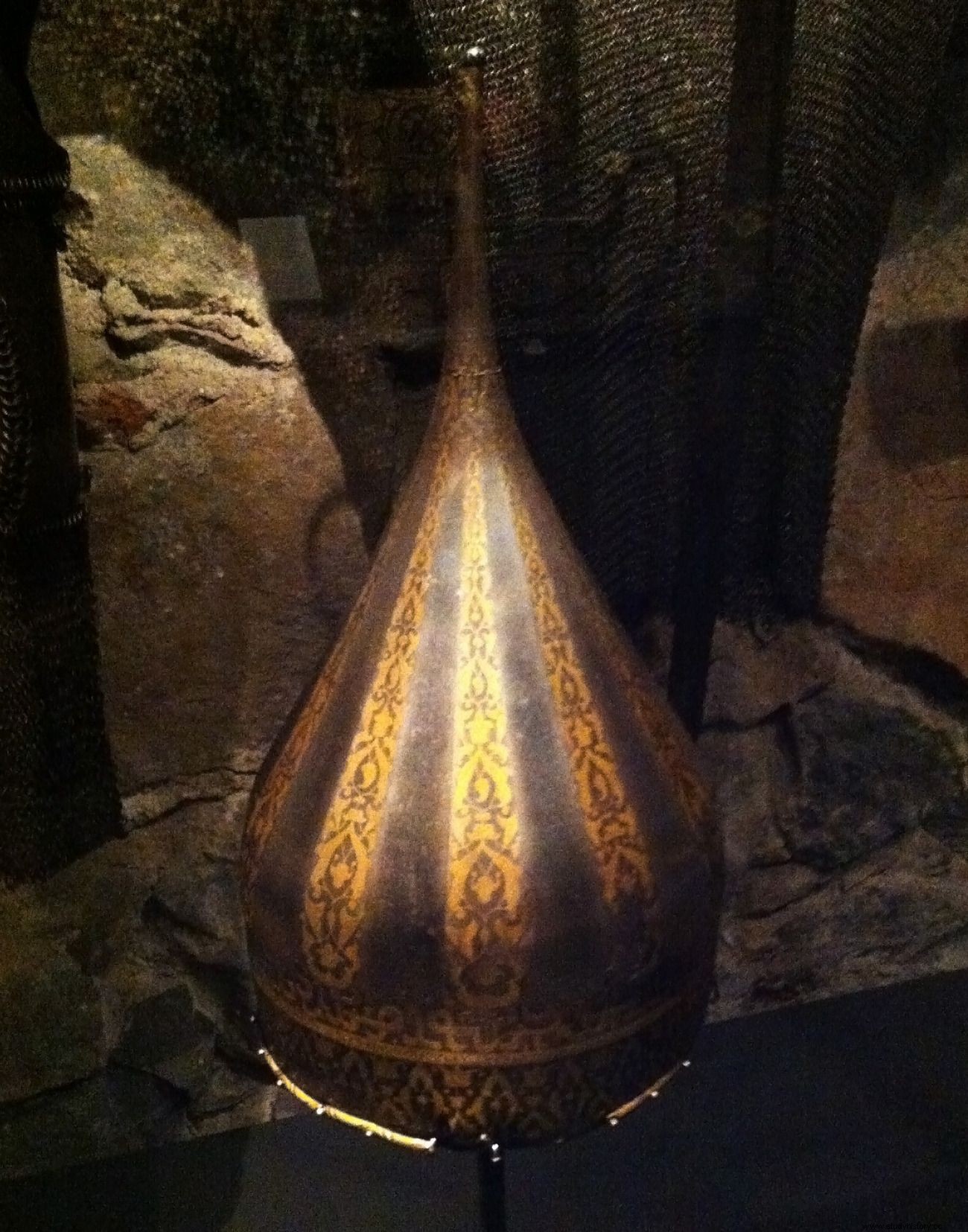
The helmet of Tsar Ivan the Terrible was first taken from the Kremlin by the Poles, and several decades later it fell to the hands of the Swedes, who took it from the Vistula.
Many tourists pay attention to the banners visible at the exhibition. There are both the banners of Polish cities:Lviv, Toruń and Elbląg, as well as individual military units, and even ... of King Jan Kazimierz himself! Interest is also aroused by other military items:cannons, muskets, sabers, but nothing beats the Turkish tent captured by Jan III Sobieski near Vienna in 1683. It fell into the hands of the Swedes near Kliszów in 1702.
In Swedish libraries and museums you can also find priceless Polish archives. This is where, for example, the Statute of Łaski, i.e. a collection of all the laws of the Kingdom of Poland, and the oldest text of The Mother of God and other religious songs are stored. In the collections of our northern neighbors, the carol "Jesus God and the Man Born in a stable in Bethlehem" has recently been rediscovered. Maybe after more than three hundred years it will be sung again?
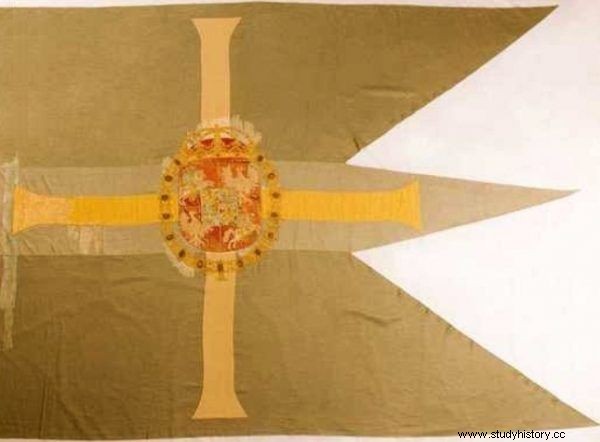
The banner of King Jan II Kazimierz Vasa, which can be seen in the Armémuseum.
In Sweden, you can also see works from the collection of Nicolaus Copernicus, including his own - "On the Revolutions of Heavenly Spheres". Some of these collections contain personal notes by the famous astronomer. In one of the books, even two of the scientist's hair were found. The DNA analysis made thanks to them later helped scientists determine the place of his burial.
And yet something was regained - Stockholm Roll (Royal Castle in Warsaw)
How is it possible that the looted goods did not return to Poland after the end of the war? After the peace treaty signed in Oliwa, Poland reserved the right to them. Soon even Godfrid von Schröer was sent overseas to recover the most important prints and manuscripts. Unfortunately, he only partially succeeded.
Later, there were also attempts to regain our property. It took place during the reign of kings Jan III Sobieski and Stanisław August Poniatowski. Unfortunately, without much success.
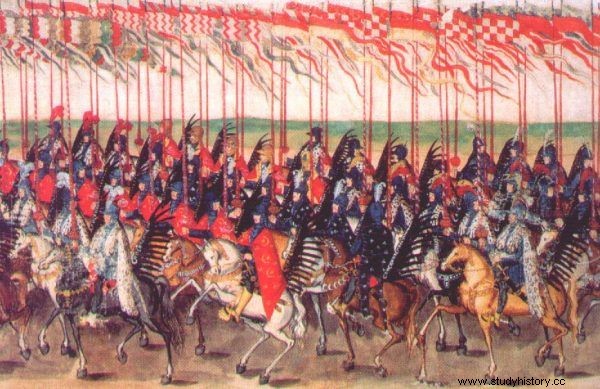
A fragment of the so-called Stockholm roll, which, as one of the few Polish polonica earned by the Swedes, returned to the Vistula.
But something did come back. Well, in 1974, after 319 years, Poland regained the so-called Stockholm roll. Its handing over was an element of Sweden's attempts to warm up relations with the Polish People's Republic, located on the other side of the Iron Curtain.
It is a monument extremely important to our culture and history. 27 centimeters wide and over 16 meters long paper shows the triumphal entry of the royal wedding procession of Sigismund III and Konstancja Habsburżanka. The ceremony took place in 1605 in Krakow. The roll can still be seen at the Royal Castle in Warsaw.
Read more about the book on the website Lubimyczyarcie.pl "Saved from the Deluge"
Bibliography:
- Marcin Jamkowski, Hubert Kowalski, Rescued from the Deluge , Agora 2018.
- Mariusz Markiewicz, History of Poland 1492-1795 , Wydawnictwo Literackie 2004.
- Dariusz Matelski, Plunder and restitution of Polish cultural goods from modern times to the present , Society of Friends of Fine Arts 2006.
- Dariusz Matelski, Problems of restitution of Polish cultural goods from modern times to the present , Harasimowicz Publishing House 2003.
- The Republic of Poland during the Deluge , ed. Jadwiga Muszyńska, Jacek Wijaczka, Pedagogical University of Jan Kochanowski in Kielce 1996.
